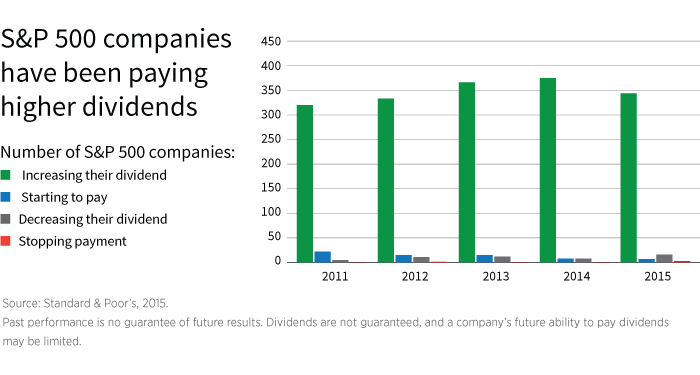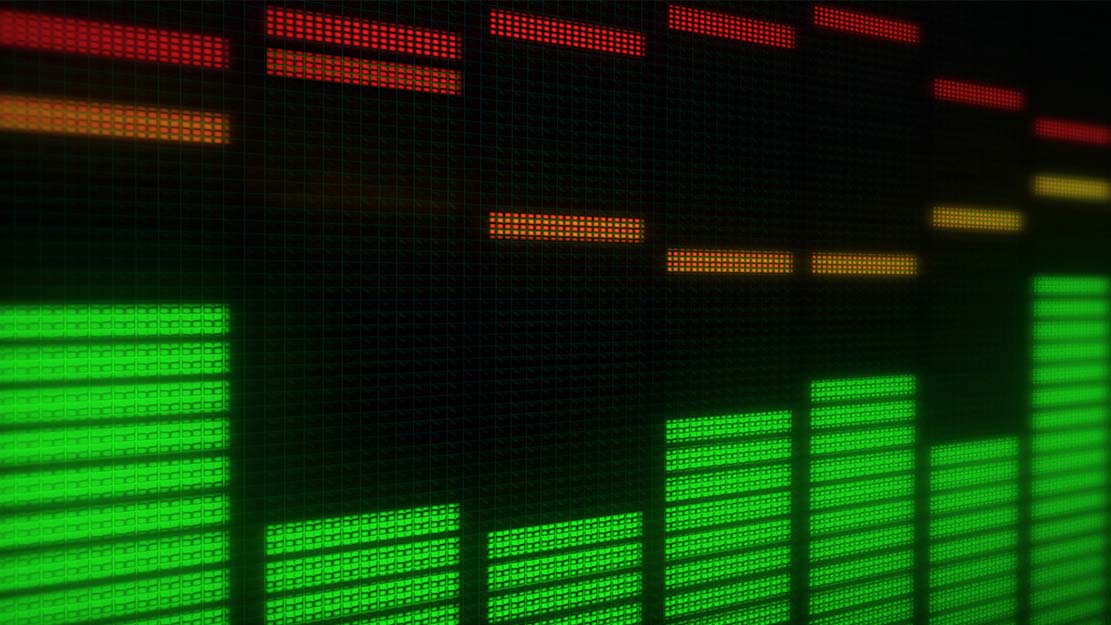U.S. large caps over the past several years have embraced again a traditional way of rewarding shareholders through dividend increases.
When a company raises its dividend payout, or begins to pay a dividend, it's a sign of confidence in its future business prospects. During the U.S. economic recovery that began in 2009, many corporations have placed an emphasis on trimming expenses. Such moves put them in a better position to support dividends to shareholders.

A majority of the companies in the S&P 500 Index have increased their dividend each year for several years running. This number peaked in 2014, then dropped modestly in 2015.
Last year also saw a small increase in the number of companies that decreased or stopped paying a dividend, reflecting in part the stress on revenues that occurred for many companies in the energy sector as oil prices plunged. The S&P 500 Index also had its weakest year of performance in 2015 since 2008.
Although dividends are often less noticed than changes in stock prices, historically they contribute significantly to the total return of stocks to investors. And if a low return environment persists, dividends could matter even more in the future.
300301
For informational purposes only. Not an investment recommendation.
This material is provided for limited purposes. It is not intended as an offer or solicitation for the purchase or sale of any financial instrument, or any Putnam product or strategy. References to specific asset classes and financial markets are for illustrative purposes only and are not intended to be, and should not be interpreted as, recommendations or investment advice. The opinions expressed in this article represent the current, good-faith views of the author(s) at the time of publication. The views are provided for informational purposes only and are subject to change. This material does not take into account any investor’s particular investment objectives, strategies, tax status, or investment horizon. Investors should consult a financial advisor for advice suited to their individual financial needs. Putnam Investments cannot guarantee the accuracy or completeness of any statements or data contained in the article. Predictions, opinions, and other information contained in this article are subject to change. Any forward-looking statements speak only as of the date they are made, and Putnam assumes no duty to update them. Forward-looking statements are subject to numerous assumptions, risks, and uncertainties. Actual results could differ materially from those anticipated. Past performance is not a guarantee of future results. As with any investment, there is a potential for profit as well as the possibility of loss.
Diversification does not guarantee a profit or ensure against loss. It is possible to lose money in a diversified portfolio.
Consider these risks before investing: International investing involves certain risks, such as currency fluctuations, economic instability, and political developments. Investments in small and/or midsize companies increase the risk of greater price fluctuations. Bond investments are subject to interest-rate risk, which means the prices of the fund’s bond investments are likely to fall if interest rates rise. Bond investments also are subject to credit risk, which is the risk that the issuer of the bond may default on payment of interest or principal. Interest-rate risk is generally greater for longer-term bonds, and credit risk is generally greater for below-investment-grade bonds, which may be considered speculative. Unlike bonds, funds that invest in bonds have ongoing fees and expenses. Lower-rated bonds may offer higher yields in return for more risk. Funds that invest in government securities are not guaranteed. Mortgage-backed securities are subject to prepayment risk. Commodities involve the risks of changes in market, political, regulatory, and natural conditions. You can lose money by investing in a mutual fund.
Putnam Retail Management.









